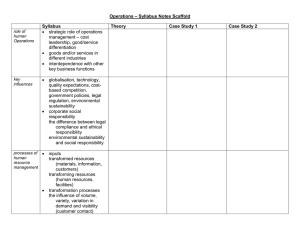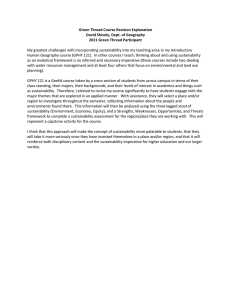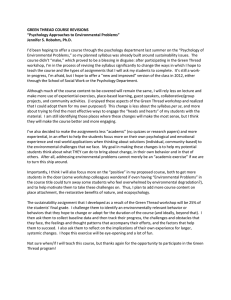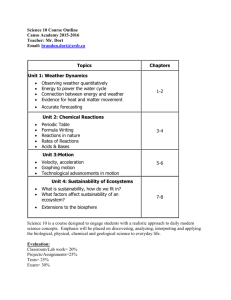David Brooks September 2, 2009 Green Thread
advertisement
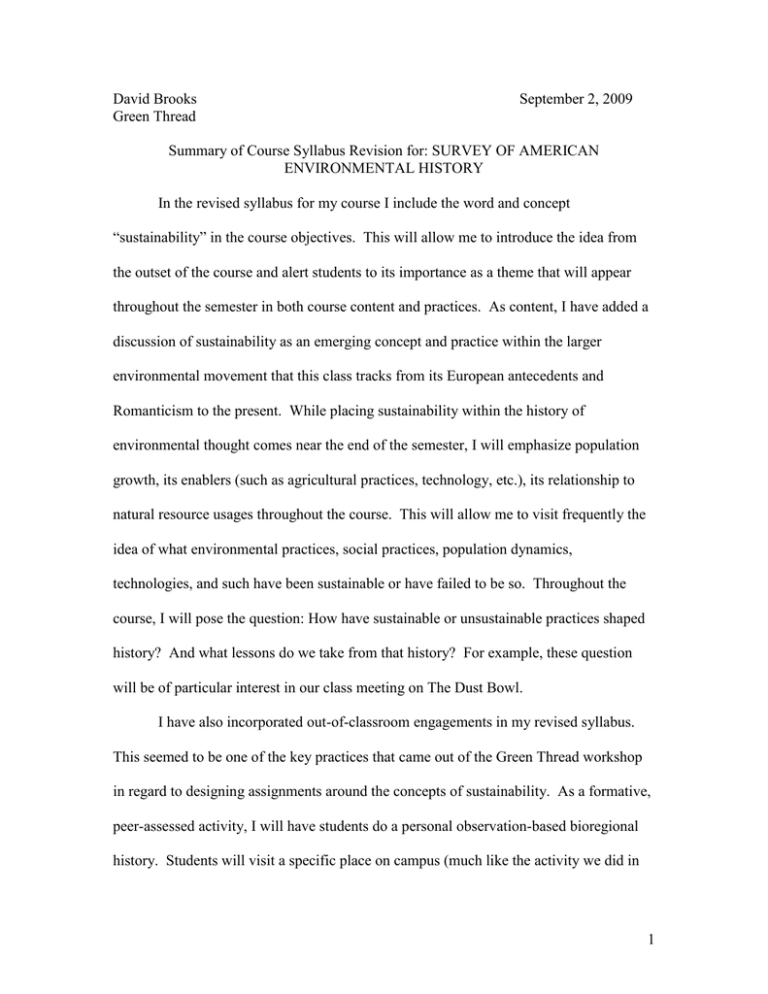
David Brooks Green Thread September 2, 2009 Summary of Course Syllabus Revision for: SURVEY OF AMERICAN ENVIRONMENTAL HISTORY In the revised syllabus for my course I include the word and concept “sustainability” in the course objectives. This will allow me to introduce the idea from the outset of the course and alert students to its importance as a theme that will appear throughout the semester in both course content and practices. As content, I have added a discussion of sustainability as an emerging concept and practice within the larger environmental movement that this class tracks from its European antecedents and Romanticism to the present. While placing sustainability within the history of environmental thought comes near the end of the semester, I will emphasize population growth, its enablers (such as agricultural practices, technology, etc.), its relationship to natural resource usages throughout the course. This will allow me to visit frequently the idea of what environmental practices, social practices, population dynamics, technologies, and such have been sustainable or have failed to be so. Throughout the course, I will pose the question: How have sustainable or unsustainable practices shaped history? And what lessons do we take from that history? For example, these question will be of particular interest in our class meeting on The Dust Bowl. I have also incorporated out-of-classroom engagements in my revised syllabus. This seemed to be one of the key practices that came out of the Green Thread workshop in regard to designing assignments around the concepts of sustainability. As a formative, peer-assessed activity, I will have students do a personal observation-based bioregional history. Students will visit a specific place on campus (much like the activity we did in 1 the workshop) and record their sensory observations, thoughts, descriptions and emotional reactions about that place. Then they will offer an analysis of the environmental history of that place based on their writing, focusing on what from the past may or may not be sustainable. As another out-of-class exercise, we, as a class, will tour the Milltown Dam restoration, UM FLAT and/or HomeWORD’s Gold Dust housing as part of our unit on “What’s the future of environmentalism?” I have also incorporated Green Thread concepts in the two assigned essays. For the first of these, a book review, I have added books about sustainability (many from the bibliography the workshop generated) to the bibliography from which students will choose a work to review. For the final, bioregional paper I have given students the option of working collaboratively to produce a longer, more thorough work that evaluates historical change, sustainable practices, and projections or plans for the future of the environment and natural resources in their bioregion of choice. I have also given them the option of foregoing the bioregional history in favor of doing volunteer work on a restoration project of their choice. For this option, they would then write a brief history of what happened that warranted restoration, and what elements of the past environment the project intends to restore. Finally, I have included some classroom practices in this course that reflect practical applications of sustainability. Students will submit and I will grade assignments electronically. I will encourage book sharing. And, we will use Blackboard for reader response activities, rather than turning in written abstracts of reading assignments. Since this is a spring course, I suspect I will continue to tinker with this syllabus in an effort to make the concepts of sustainability more explicit throughout. 2

